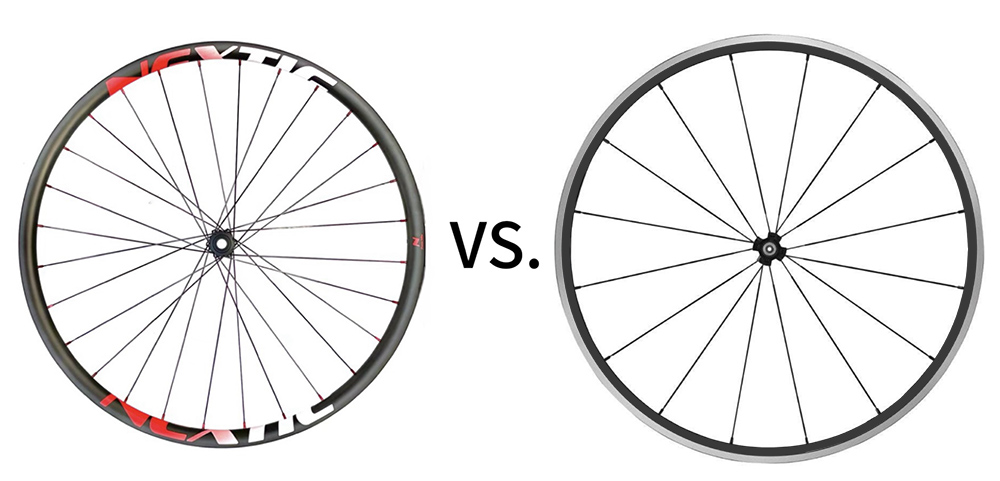Carbon Wheels vs Aluminum Wheels:
In the competitive world of cycling equipment, the debate between carbon fiber rims and aluminum rims has been ongoing for years. Both materials have specific advantages and appeals to different riders. Alloy wheels are known for their affordability. In contrast, carbon fiber wheels can be lighter, more aerodynamic, and more responsive but tend to be more expensive.
In this article, we’ll explore the differences, specifically weight, aerodynamics, stiffness, and cost-effectiveness.

Advantage of Carbon Fiber Wheels
Extreme Lightweight
Carbon fiber wheels are renowned for their ultra-lightweight properties, offering an average weight reduction of approximately 300 grams compared to aluminum wheels. This significant weight savings translates into increased speed and agility, making them the preferred choice for professional cyclists and enthusiasts alike who prioritize performance.
High Strength and Rigidity
Despite their lightness, carbon fiber wheels exhibit exceptional strength-to-weight ratio and stiffness. This combination ensures that riders enjoy a responsive and stable ride, even at high speeds. The material's high modulus allows for precise handling and control, enhancing overall safety.
Aerodynamic Efficiency
Carbon fiber wheels often feature deeper profiles, which contribute to better aerodynamic performance. This reduces drag and enables riders to maintain higher speeds with less effort, a crucial factor in competitive cycling.
Durability and Fatigue Resistance
While carbon fiber wheels can be susceptible to impact damage, they are highly resistant to fatigue. Unlike aluminum, which can gradually weaken with use, carbon fiber maintains its structural integrity over time, ensuring a longer lifespan under normal conditions.
Disadvantages of Carbon Fiber Wheels
High Cost
The primary drawback of carbon fiber wheels is their steep price tag. Advanced materials and complex manufacturing processes drive up costs, making them a luxury item for many riders. This can be a significant barrier to entry for budget-conscious consumers.
Vulnerability to Impact Damage
Carbon fiber wheels, while strong, are relatively fragile under severe impact or crashes. Cracks or fractures can occur, often requiring expensive repairs or replacements. This vulnerability can be a concern for riders who frequently encounter rough terrain or participate in high-risk activities.
Advantages of Aluminum Wheels
Cost-Effectiveness
Aluminum wheels offer excellent value for money, with lower production costs translating into more affordable prices for consumers. They are a practical choice for riders who prioritize budget over absolute performance.
Heat Dissipation
Aluminum has excellent thermal conductivity, enabling it to dissipate heat efficiently during braking. This reduces brake fade and improves overall braking performance, enhancing safety.
Ease of Repair
In the event of damage, aluminum wheels are generally easier and less expensive to repair than carbon fiber rims. This reduces the overall cost of ownership and maintains the rims' functionality for longer.
Disadvantages of Aluminum Wheels
Heavier Weight
Compared to carbon fiber, aluminum wheels are significantly heavier. This added weight can negatively impact speed and acceleration, making them less suitable for performance-oriented riders.
Lower Aerodynamic Efficiency
Aluminum wheels typically have shallower profiles, which can result in higher aerodynamic drag. This can limit top speeds and require more effort from riders to maintain pace.
Conclusion
Both carbon and alloy offer benefits, and the best choice depends on your specific needs and preferences. By understanding the key differences behind them, you can make an informed decision and select the wheels that best enhance your cycling experience.